The impacts associated with city functions, economic, environmental, mobility, extend well beyond their administrative boundaries. But the contemporary and dominant frameworks and systems for managing cities have always determined what activity is allowable, where, and how the infrastructure and any developments pertaining to the function would be developed. Thus, functionality of cities has been defined by secondary activities—industry, transportation and services—which were ideally delimited within the city boundaries, as was done in the Roman cities of the medieval period. Even when walls around such cities were largely defensive, the delimited town activities often defined those who lived outside the walls as living in rural areas. But from a functional perspective, the reality is that cities have complex and indivisible links with primary activities and that secondary activities have always transcended their boundaries. The notion of city-delimited functionality has been challenged from the experiences of contemporary urbanization. This article focuses on the fluidity of the nature of city development, and more importantly city functions. The article illustrates how the untamed city has evolved. And perhaps this untamedness connects it more closely to nature than perhaps the ideal city.
First, there is an issue with some city areas being labeled “informal”. Following the Sustainable Development Goal 11, specifically on cities, transformation of cities for sustainability will likely mean deconstructing large areas like Kampala, categorized as informal. We argue here that the “informal” is actually the city. From housing, diverse infrastructure, innovative livelihood activities, patterns of growth and sprawl, economy, labor market, industrious innovativeness and social differentiation, these informal settlements are not only the largest settlements in many African cities, they also offer careers and lifetime experiences for many people in Africa[3–5]. Measures of the proportion of people living in these settlements and their access to infrastructure services, such as water, sanitation and waste management, do not provide an accurate picture of the cities in sub Saharan Africa, but have directed spatial planning to assume an envisaged city with symbolic architecture, infrastructure systems and an economy based on formally recognized employment.
A key element of the city configuration is the widely practiced urban agriculture that connects the “untamed” city to nature perhaps more than the planned city. Through urban agriculture and now urban forestry, the informal has demonstrated sustaining of livelihoods, provided diverse opportunities and challenges that create compelling reasons to rethink the city in sub Saharan Africa[6].
The city region
Picking up on the notion of spatially extended functionality of cities, evidence shows that cities are now extended regions. Cities depict a mix of built up with nature and tinkered nature. For example, tree canopies hanging over housing structures with repeated partners over space and examples of housing structures carved in tandem with waterways and or natural rock. Urban expansion in the Kampala region is characterized by the opening up of land for development sprawling out from the city center to create a pattern described as a “runaway” city. Most parts of the newly developed areas in the Kampala region are informal and this pattern of growth historically characterizes the city. This makes deconstructing the informal growth that has developed for over seven decades not only difficult but impractical. By nature of this growth pattern, formal employment can only absorb a small proportion of the increasing labor force. The result is that many people turn to urban and peri-urban agriculture and forestry that utilizes spaces which are not under housing or infrastructure. In the core city zone, space confined technologies of urban agricultural production are used while in peri-urban zone, extensive agricultural and livestock production is practiced. In both cases, the link with nature in the city-region is characterized by patches of green spaces, wetlands and forest patches in which nature flourishes, creating a region of built up-nature interlinkages.
Harnessing the opportunities of nature
The urban economy of Kampala is complex, given that the city is also the industrial hub of the country. Complex because it is characterized by a range of economic activities at multiple scales. From large-scale industries, medium scale industries to micro-scale artisanal activities that make use of material inputs from the importation sector as well as leveraging local materials and more recently solid wastes. This manufacturing-oriented economy is related to various forms of trading, most of which again are informal and continuously faces the wrath of municipal regulation of confiscation, eviction and strained relations[13].
It is the lower end of economic activity in both manufacturing and trade that offers employment to the majority of low-skilled urban laborers majority of whom live in the informal settlements. Urban agriculture also offers lower end jobs in form of (i) making manure—both in compost and liquid forms, (ii) mixed cropping to intensify use of available land, (iii) vegetable sack gardening (figure 4), (iv) digging aquaculture trenches, (v) growing commercial flowers in tins, (vi) using banana and sweet potato peels as animal feed, (vii) making herbal insecticides, pesticides and medicines for poultry and animals, (viii) building storied poultry and animal houses to maximise available space and (ix) making charcoal briquettes from banana peelings.
Marketable individual skills are described as low among the many people, but it is also important to note that the formal labor market is expanding at a much slower rate compared to the many people entering the urban labor market on the whole. In the mix of the urban economy of Kampala, urban agriculture absorbs a proportion of the low-skilled labor as well as the highly trained youth transitioning into the labor market. From energy briquettes, compost, inorganic resalable, recycling to commercial urban agriculture at multiple scales, these economic undertakings are taking root and expanding as fast as opportunities open up. People in informal settlements recognize they can easily make entry into the economy and labor market through these initiatives[14–16].
Literature for example shows that based on individual enterprises, farmers in Kampala on average annually earned about 101,000 Ushs ($US59.4) from bananas, 133,400 Ushs ($78.5) from beans, 7,160 Ushs ($4.2) from cassava, 122, 900 Ushs ($72.3) from maize and 69,100 Ushs ($40.6) from yams among other crops. Average annual earnings of 757,100 Ushs ($445.4) from chicken (Figure 3), 292,500 Ushs ($172.1) from goats, 521,618 Ushs ($306.8) from pigs, 3,333,764 Ushs ($1,961.0) from eggs and 1,461,000 Ushs ($859.4) from turkeys among other products recorded in the poultry and animal enterprises. These estimates are benchmarked in 2009 and with inflation the values have gone up.
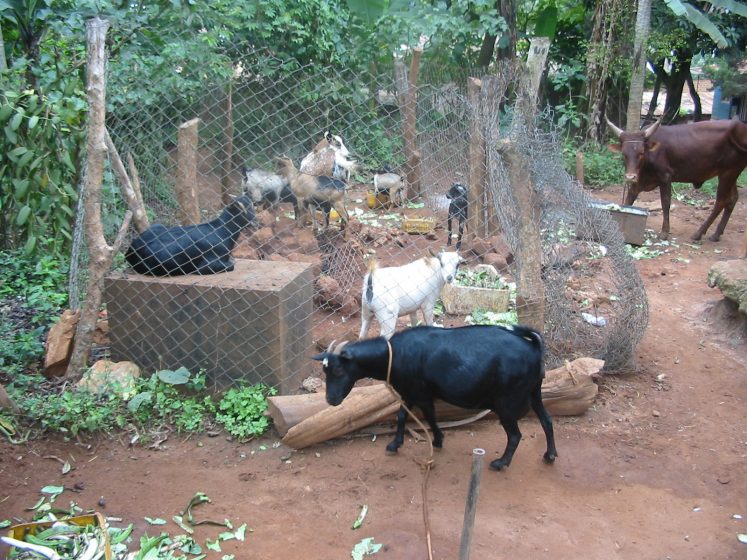
Peri-urban is more than a mix of distinct urban or rural
Different interpretations notwithstanding, the peri-urban areas of Kampala have undergone tremendous spatial, social and environmental change due to the expansion of the urban area in the runaway pattern described earlier. In Kampala, these are areas characterized by spontaneous developments, with a mix of distinct ‘rural-based’ livelihoods, active land markets that are converting large areas to urban uses but in a fragmented nature. Through land speculation, land markets have significantly contributed to this change in Kampala and the key aspect of this is how diverse infrastructure systems have emerged to connect the peri-urban areas to the city. An interesting aspect about peri-urban development is the increasing settlement by middle-income families who access the city through private transportation modes. Developments have been established along transport arteries at the periphery, but real estate establishments have also come up in areas that were previously agricultural.
Amid the housing and infrastructure developments are urban agriculture and peri-urban forestry. These processes, in the context of this article, are an illustration of informal growth as the city and the peri-urban area no longer offer just mix of distinct rural and urban livelihoods. Associated with the peri-urban processes are the issues of the social networks that link people across scales from the urban core to rural hinterlands[20]. These networks amplify the economies, the flow of materials and capital, fueling an economy that earlier was described as complex by nature, scale, actors and businesses. These social networks have become significant for the urban people in the quest to improve their livelihoods, another example of the presence and assertion of the informal as a city utilizing materials from nature.
Opportunities of fragmented urban ecosystem
In Kampala the fragmentation of urban nature is a significant feature of urban development. The reason for this continued fragmentation is that most urban areas are founded on earlier urban development principles and structures, among which is the separation of ‘incompatible’ land uses [17]. But this process is broken by spontaneous developments that disregard separated ‘urban uses’ like industry, residential and commercial zones to create a weave of uses, scales of development and diverse infrastructure. In regard to infrastructure, the fragmentation becomes important because it is slowly leading to the emergence of decentralized systems that leverage the ecosystem services such as sewerage treatment plants and lagoons. Thus, the potential for sustaining a level of ecosystem services could lie in the informal, which is actually tapping the ecosystem services. For example, septic tanks, sewerage treatment mini-plants, diverse water sources and biodiversity within built up areas tap into the ecosystem services of the urban ecology. Contemporary planning of cities is slowly embracing the ‘planning with nature’ principle [21] which is motivated by recent discourse on global environmental change. The spatial allocation of land use activities, investment in infrastructure, and preservation of open space across a range of scales from micro to city-regional scale in Kampala affects urban activities and urban space that directly relates to the energy supply and demand including opportunities for renewable energy. This has led to a ‘weave’ of built up imprints on the natural landscape where new developments would be developed with renewal of natural landscapes for already urbanized regions. Kampala city region is potentially a field under which this concept of fragmented but enhanced ecosystems can be tested by building on the ‘informal’ pattern of development. This seamless relationship between ecosystems and informality is not only scalable in terms of expanding production, enterprises and actors, but has demonstrated the potential for multi-objective urban interventions to ease urban stress, risk, reduce economically disadvantaged urban dwellers and enhance ecosystem services across city to city-regional scales. Multiple scale activities from neighborhood level interventions are changing productivity in urban spaces but also urban development trajectories and production systems that span to city-regional scale[22]. This does not imply that the fragmentation is good in itself nor does it convey that there are no problems with the informal city. The argument here is that it is perhaps time to think of informality from the wealth, innovativeness, opportunities point of view given its long-time establishment and the difficulty in deconstructing the informal.
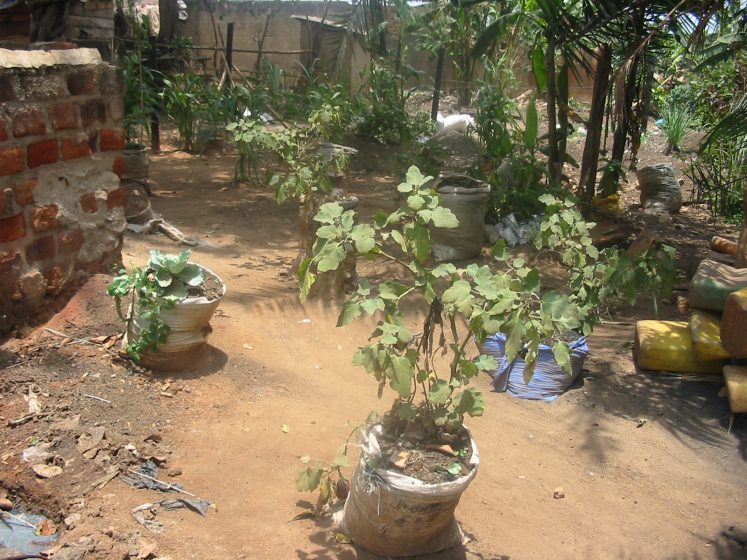
Can the untamed city be tamed?
Informal settlements have problems and they continue to pose risks and challenges to their residents. Whereas the argument in the paper is to rethink and use lenses that recognize the value and opportunities of informality, there are still problems that have to be navigated and perhaps not dealt with entirely if the opportunities in the ‘informal’ settlements are to be harnessed. Informal settlements have issues in respect to health outcomes as a result of incoherent and inconsistent urban and peri-urban agriculture and forestry practices. The difficulty of moving micro-businesses to the meso- or macro-scale in informal settlements is yet to be resolved to harness this potential and enable the integration of the population into the urban labor market and economy. This is because it directly relates to marketable skills but with flexible skills development, it can change. The vision of modernist urban Africa with its attendant developments around housing, infrastructure, public transport systems lingers as a desire for many urban dwellers across social and income classes in Kampala. Thus these lenses position informal settlements as a hindrance to this envisioned transition. The downside of this vision is that it potentially attracts private investments in housing, infrastructure, commercial entities that disadvantages the majority in informal settlements and accentuates risk and poverty. So the argument of this paper is that whereas the limitations to harness the potential exist, scaling up, businesses development, branding, networking diverse infrastructures are some of the activities needed to transform the city by building on instead of deconstructing.
Conclusion
Kampala’s experiences provide evidence about the speed at which medium sized cities are growing and expanding faster and the patterns of spatial growth with a mix of modernist and traditionalist elements. Development is occurring well ahead of formal planning resulting in settlements that have inadequate services and infrastructure, which leads to the creation of diverse alternative infrastructures. The nature of Kampala’s expansion raises challenges of integrating low-skilled human resources into the urban labor market and the socio–economic and environmental possibilities of the modernist urban development.
But potential lies underneath if the informal is looked at as the city. Unplanned informal settlements are not just poor settlements with infrastructure, social services deficits and haphazard development. They are cities themselves, housing and employing the majority of the urban population in Kampala, providing livelihoods and careers, offering alternative infrastructures and entry points into the urban economy through urban and peri-urban agriculture. The convergence of formal and informal development produces a mosaic, both spatial and socio-economic with scalable activities. This mosaic demonstrates a potential around production, coordinated use of local resources (water, waste, land), enterprise management and value chains which have enabled innovative solutions that may have a seamless relation with integrated spatial plans.
Shuaib Lwasa
Kampala
References
[1] S. Parnell, E.A. Pieterse, Africa’s urban revolution, (2014).
[2] S. Lwasa, Planning innovation for better urban communities in sub-Saharan Africa: The education challenge and potential responses, Town Reg. Plan. 60 (2013) 38–48.
[3] H. Ernstson, S.E. Leeuw, C.L. Redman, D.J. Meffert, G. Davis, C. Alfsen, et al., Urban Transitions: On Urban Resilience and Human-Dominated Ecosystems, AMBIO. 39 (2010) 531–545.
[4] D. Simon, The Challenges of Global Environmental Change for Urban Africa, Urban Forum. 21 (2010) 235–248. doi:10.1007/s12132-010-9093-6.
[5] UN-Habitat, The State of African Cities, United Nations Human Settlements Programme, Nairobi, 2008.
[6] S. Lwasa, Managing African urbanization in the context of environmental change, INTERdisciplina. 2 (2014) 263–280.
[7] M. Lawhon, H. Ernstson, J. Silver, Provincializing urban political ecology: Towards a situated UPE through African urbanism, Antipode. 46 (2014) 497–516.
[8] E.A. Pieterse, A.M. Simone, Rogue Urbanism: Emergent African Cities, Jacana Media, 2013.
[9] S.D. Karen C. Seto, Intergovernmental Panel on Climate Change. Working Group III – Climate Change Mitigation. Chapter 12: Human Settlements, Infrastructures, and Spatial Planning, (2014).
[10] Ahmed A. Syud, Noah S Diffenbaugh, Thomas WHertel, Climate volatility deepens poverty vulnerability in developing countries, Environ. Res. Lett. 4 (2009) 8. doi:doi:10.1088/1748-9326/4/3/034004.
[11] S. Lwasa, M. Tenywa, G.J. Majaliwa Mwanjalolo, G. Prain, H. Sengendo, Enhancing adaptation of poor urban dwellers to the effects of climate variability and change, Global Risks, Challenges and Decisions, IOP Conference Series, Earth and Environmental Science, in: 2009: p. 332002.
[12] K. Vairavamoorthy, S.D. Gorantiwar, A. Pathirana, Managing urban water supplies in developing countries – Climate change and water scarcity scenarios, Phys. Chem. Earth Parts ABC. 33 (2008) 330–339. doi:10.1016/j.pce.2008.02.008.
[13] T. Goodfellow, ’The bastard child of nobody’?: anti-planning and the institutional crisis in contemporary Kampala, (2010). http://www2.lse.ac.uk/internationalDevelopment/research/crisisStates/Publications/publications.aspx.
[14] B. Kareem, S. Lwasa, From dependency to Interdependencies: The emergence of a socially rooted but commercial waste sector in Kampala City, Uganda, Afr. J. Environ. Sci. Technol. 5 (2011) 136–142.
[15] B. Kareem, S. Lwasa, Gender responsiveness in infrastructure provision for African cities: The case of Kampala in Uganda, J. Geogr. Reg. Plan. 7 (2014) 1–9.
[16] S. Lwasa, F. Mugagga, B. Wahab, D. Simon, J. Connors, C. Griffith, Urban and peri-urban agriculture and forestry: transcending poverty alleviation to climate change mitigation and adaptation, Urban Clim. (2013). doi:10.1016/j.uclim.2013.10.007.
[17] U. Habitat, Planning sustainable cities—Global report on human settlements 2009, Earthscan Lond. (2009).
[18] UN-Habitat, UN-Habitat Country Statistics Overview 2001, (2001). http://www.unhabitat.org/list.asp?typeid=44&catid=240.
[19] S.L. and C. Kinuthia-Njenga, Reappraising Urban Planning and Urban Sustainability in East Africa, (2012). doi:10.5772/35133.
[20] P. International Conference on Social Science and Social Policy, L.A. Kosinski, International Social Science Council, Social science at the crossroads: proceedings of the International Conference on Social Science and Social Policy in the 21st century, ISSC, Paris, 2003.
[21] S.Y. Zhou, H. Chen, S.C. Li, Resources use and greenhouse gas emissions in urban economy: Ecological input–output modeling for Beijing 2002, Commun. Nonlinear Sci. Numer. Simul. 15 (2010) 3201–3231. doi:10.1016/j.cnsns.2009.11.026.
[22] S. Lwasa, F. Mugagga, B. Wahab, D. Simon, J. Connors, C. Griffith, Urban and peri-urban agriculture and forestry: transcending poverty alleviation to climate change mitigation and adaptation, Urban Clim. 7 (2014) 92–106.

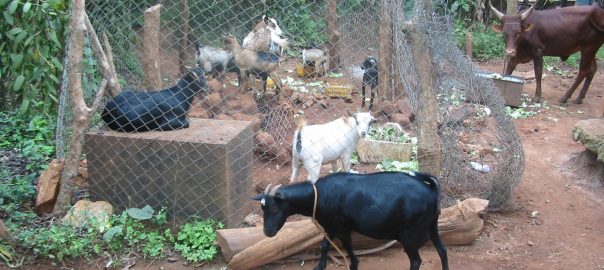






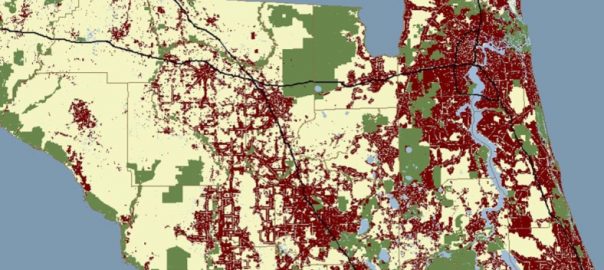
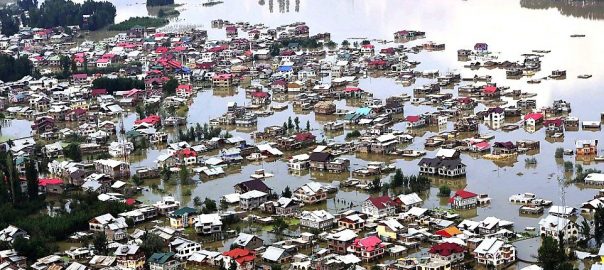
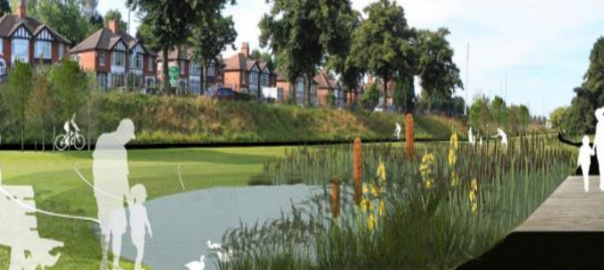
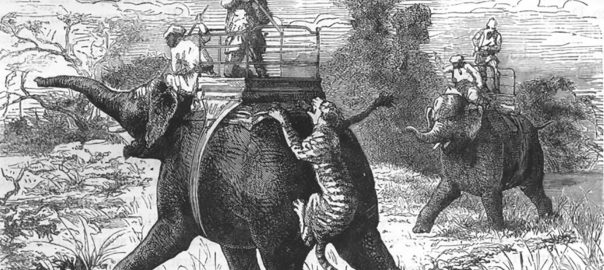
Very interesting article; I can see similarities between African and Brazilian “runaway” cities. I’d like to ask you if you observed any links with regional biodiversity not necessarily based on an instrumental view, anything that could suggest a sort of identification, learning and, above all, caring about native plants and animals. Thank you.